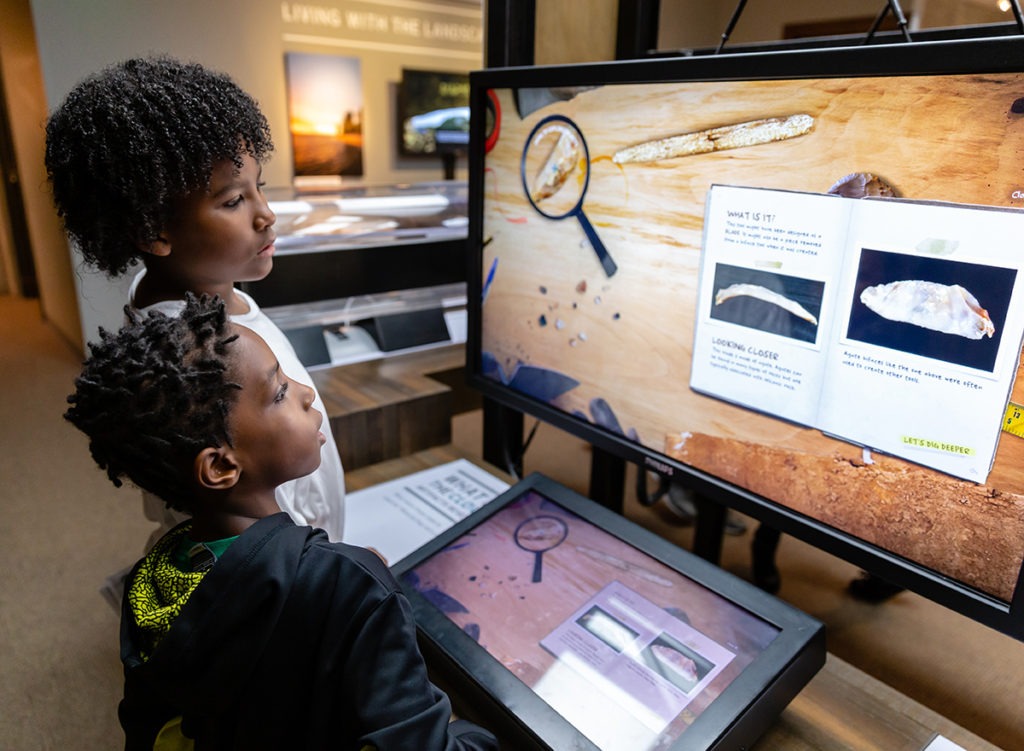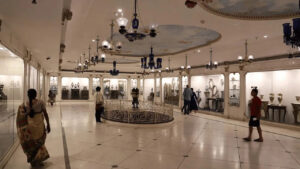
Blogs
The Importance of Interactive Museum Displays
In today’s rapidly evolving world, museums are no longer static repositories of history. They are evolving into dynamic spaces where visitors interact with exhibits in innovative and meaningful ways. Interactive museum displays are at the forefront of this transformation, engaging audiences with advanced technologies that enrich the educational experience. From AI-powered exhibits to virtual reality experiences, these interactive displays have become a vital part of modern museum design.
In this blog, we will explore why interactive museum displays are crucial to the future of museum design and how they enhance visitor engagement, learning, and retention. We will also delve into the technical and engineering aspects involved in bringing these displays to life.
Enhancing Visitor Engagement with Technology
Interactive installations and digital experience centers have revolutionized the way visitors engage with museum content. By integrating technology, museums can create memorable experiences that draw visitors in and keep them engaged throughout their visit. Interactive displays are particularly effective in making exhibitions more approachable, engaging, and educational. Here’s how:
- Tech-Experiential Spaces: Incorporating futuristic technologies such as AI, robotics, and augmented reality (AR) enables visitors to engage with exhibits in ways that were previously unimaginable. For example, interactive LED walls or holobox displays allow visitors to explore content from different angles and perspectives. These immersive displays encourage exploration and help to maintain foot traffic throughout the museum.
- Multi-Sensory Engagement: Interactive displays are not just visual; they also engage other senses. By incorporating sound design, lighting, and even touch-sensitive interfaces, museums create spatial experiences that resonate more deeply with visitors. These sensory experiences often help to reinforce a museum’s narrative and educational objectives.
- AI-Powered Exhibits: With advancements in Artificial Intelligence (AI), museums can now create AI-powered exhibits that adapt and respond to visitor interactions. For example, AI can tailor content or showcase specific exhibits based on visitor preferences, enhancing the personal connection and making the experience feel more relevant and immersive.

Interactive Displays as Learning Tools
Interactive museum displays offer visitors a chance to actively participate in their learning experience, making the process of understanding history, art, or science more engaging. Traditional passive observation is transformed into active participation, where visitors can manipulate exhibits, explore concepts in-depth, and even solve puzzles or games that enhance understanding.
- Interactive VR Games and Experiences: Interactive VR games and virtual reality installations have made learning more experiential. For instance, visitors can step into a simulated environment that recreates historical events or take a virtual tour of an ancient city. By actively participating in these experiences, visitors can absorb information in a way that feels personal and impactful.
- Exhibit Curation Through Interactivity: Exhibit curation becomes much more dynamic when it involves interactive elements. Through interactive kiosks, touchscreens, and AR experiences, museums can offer deeper insights into their exhibits. Visitors can access additional content such as videos, 3D models, and historical context—allowing for a much more engaging and informative experience.
- Educational Impact: The educational value of interactive museum exhibits is significantly enhanced because they require the visitor’s active involvement. Whether through an interactive LED wall, a multi-media exhibition, or a sensory lighting design, each element promotes a deeper level of understanding and retention. Studies have shown that people are more likely to remember information that they actively engage with, as opposed to content they simply observe.
Supporting Museum Narrative and Thematic Exhibitions
Museums often focus on a particular theme or narrative, and interactive exhibits play a vital role in bringing these stories to life. Whether a museum is focused on ancient civilizations, modern science, or contemporary art, interactive displays can be used to engage visitors and highlight key themes.
- Creating a Captivating Narrative: A strong, captivating narrative is central to a museum’s success. Interactive exhibits help to communicate the museum’s story in an engaging way. For example, in a heritage museum, animatronic models or interactive VR experiences can bring historical figures to life, making the visitor feel like they are experiencing history firsthand.
- Thematic Exhibitions and Storytelling: Interactive displays help reinforce the museum’s overarching themes. For instance, interactive installations that allow visitors to explore the construction of the Taj Mahal or the history of Indian art can turn a passive experience into an immersive storytelling journey.
- Enhancing Cultural Preservation: Interactive exhibits offer innovative ways to preserve and present cultural heritage. By using technology, museums can showcase and protect delicate artifacts or artworks in a digital format. Holographic displays or AI face projecting systems can bring traditional and cultural stories to life, preserving them for future generations in a dynamic and accessible way.

Design and Engineering Aspects of Interactive Displays
The integration of interactive technologies requires careful planning and execution, and it involves several key design and engineering components. Ensuring that the technology works seamlessly with the overall museum layout and enhances the visitor experience requires expertise in exhibit design, lighting design, and engineering.
- Exhibit Design and Layout: The placement of interactive exhibits within the museum layout is crucial. Designers must ensure that exhibits are accessible, engaging, and part of the overall museum experience design. This involves not just physical placement, but also the integration of wayfinding strategies to guide visitors smoothly through the space.
- Lighting and Display Technology: Lighting design is essential for enhancing interactive exhibits. Proper lighting ensures that digital displays and interactive screens are clearly visible without causing glare or reflections. Additionally, specific lighting can highlight key objects in exhibits or create atmosphere to match the exhibit’s narrative.
- Technical Considerations: From furniture design and museum display units to electronic displays and interactive kiosks, technical considerations play a crucial role in the success of interactive exhibits. Whether it’s ensuring that interactive kiosks work smoothly or that robotic models function seamlessly, a robust engineering team is required for the installation and maintenance of these exhibits.
- Integration of Automation and Robotics: Incorporating automation and robotics into exhibits can significantly enhance visitor interaction. Robots can act as guides or narrators, while automation can create immersive, evolving experiences that adjust based on user input.

How Peach Prime Consultancy Can Help Design and Plan Your Museum
At Peach Prime Consultancy, we specialize in museum design and execution, offering tailored solutions to create innovative and immersive spaces. Whether you are looking to design a heritage museum, interactive experience gallery, or a futuristic art museum, we provide design and execution services that integrate lighting design, AI-powered exhibits, and interactive installations. Our team of museum architects, interior designers, and engineering experts ensures that your museum project meets both aesthetic and functional requirements while offering visitors an unforgettable experience.
If you are planning a museum in India, our collaborative approach will ensure that your vision becomes a reality, integrating modern design principles with historical significance. Let Peach Prime Consultancy guide you through the process, from conceptualization to master planning and exhibit installation.
We understand the challenges of communicating complex scientific concepts in a museum setting. Our services include comprehensive budget planning and cost estimation to ensure your project aligns with financial expectations, with a detailed breakdown of the total project cost.Our team of experienced designers, educators, and technologists is equipped to create innovative and engaging exhibits that will capture the imagination of visitors of all ages. Whether you are based in Aligarh, Ambala, Amravati, Anand, Asansol, Bikaner, Bilaspur, Bhagalpur, Bhilwara, Bhopal, Bokaro, Chandrapur, Chhindwara, Chittorgarh, Cuttack, Dehradun, Dhanbad, Dibrugarh, Erode, Faizabad, Gandhinagar, Gaya, Gandhinagar, Gorakhpur, Haldia, Hazaribagh, Hisar, Jabalpur, Jalgaon, Jamshedpur, Jhansi, Jodhpur, Kanpur, Kolhapur, Kollam, Kurnool, Lucknow, Madurai, Mahesana, Mangalore, Meerut, Moradabad, Muzaffarpur, Nadiad, Nanded, Nizamsabad, Patiala, Raipur, Udaipur, and Vellore.
We offer a comprehensive range of services to support your project. These include concept development and master planning, content curation and scriptwriting, exhibit design and fabrication, and interactive media development.











